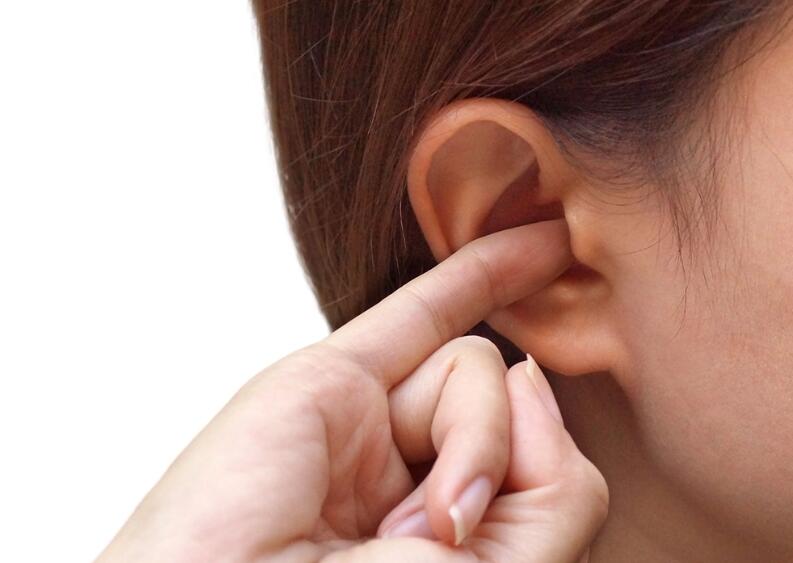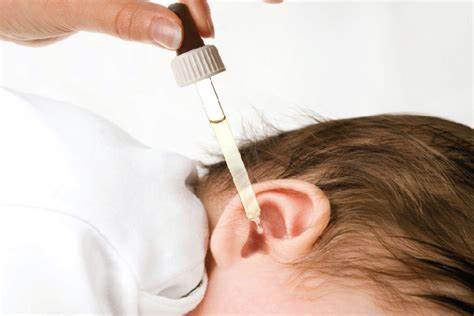Earwax, also known as cerumen, is a natural substance produced by the ear canal to protect the ear from foreign particles, bacteria, and infections. In normal circumstances, earwax is beneficial and can help prevent hearing problems. However, if it builds up and becomes impacted, it can cause discomfort, hearing problems, and even infection.
Fortunately, there are several ways to eliminate excess ear wax at home that won’t further irritate your ears. However, you must be careful about using these methods at home because they can cause more damage than good if done incorrectly. This article will discuss the ten best home remedies for ear wax removal.
Causes of Ear Wax Build-Up
- Excessive earwax production: Some people naturally produce more earwax than others, which can lead to a build-up over time.
- Narrow ear canals: People with narrow ear canals may be more prone to earwax build-up, as the wax may have a harder time moving out of the ear canal.
- Using earplugs or hearing aids: Regular use of earplugs or hearing aids can push earwax further into the ear canal, leading to blockages.
- Q-tip usage: Using Q-tips or cotton swabs to clean the ear canal can push earwax further into the ear canal and cause blockages.
- Skin conditions: Certain skin conditions, such as eczema or psoriasis, can cause an overproduction of earwax.
- Age: As people age, the consistency of their earwax may change, becoming harder and drier, which can make it more difficult to move out of the ear canal.
Earwax Buildup Symptoms
- Feeling fullness or pressure in the ear: This is usually the first symptom of a blockage due to earwax buildup. It is often accompanied by a muffled sound in the affected ear.
- Hearing difficulty: Sounds may seem muffled or faint, or there may be difficulty hearing certain pitches or frequencies.
- Tinnitus: A ringing, buzzing, or whistling sound in the ear, usually caused by earwax buildup.
- Itching: Itchy ears may be a sign of a blockage in the ear canal.
- Ear pain: Pain or discomfort in the ear can be a sign of wax buildup.
- Discharge: If a discharge comes from the ear, it could be a sign of a blockage due to wax.
- Coughing: Coughing can be a sign of an ear infection, which a buildup of earwax may cause.
- Balance problems: A blockage due to wax buildup can cause a feeling of dizziness or spinning.
- Facial paralysis: A blockage in the ear can cause facial paralysis due to pressure on the facial nerve.

How to Safely Remove an Earwax with Natural Remedies
Several natural remedies are believed to be safe and effective for removing earwax buildup at home.
1. Soften earwax blockages with oil
Softening earwax blockages with oil is an effective and safe way to clear your ears of wax buildup. Here are the steps for doing this:
- Begin by lying on your side with the affected ear facing up. You can also do this while sitting up, but lying down provides the best access to your ear.
- Fill a medicine dropper with a few drops of baby oil, mineral oil, or glycerin.
- Gently place the dropper in the outer ear canal and squeeze the bulb to release the oil into the ear.
- Keep your head in this position for several minutes so the oil can work it into the wax and soften it.
- After a few minutes, you can turn over onto your other side to help the oil work out of your ear.
- To remove the wax, use a soft cloth to wipe away the softened wax from the outer ear gently.
Use a clean cloth to wipe away the wax to avoid introducing bacteria into your ear canal. Additionally, do not use cotton swabs or other objects to clean your ears, as this can cause damage to the ear canal.
2. Baking soda
Baking soda is a natural and effective way to remove earwax. It has been a safe home remedy for centuries to clean and soften earwax buildup. Combining baking soda and warm water can help to ease the earwax and make it easier to remove.
- Create a baking soda paste by adding one teaspoon of baking soda and one teaspoon of warm water in a small bowl. Stir the mixture together until it creates a paste.
- Apply the paste to a cotton ball and place it in the ear’s opening.
- Gently massage the outside of the ear in a circular motion for 5 minutes. This helps to break up the earwax.
- Tilt the head to the side and allow the liquid to drain out.
- Use a clean cloth to wipe the inside and outside of the ear.
- Repeat these steps daily until the earwax is completely gone.
It is essential to use this remedy safely to avoid damaging the ear canal or eardrum. If the earwax does not seem to improve after a few days, it is recommended to see a doctor for further evaluation.
3. Hydrogen peroxide
Hydrogen peroxide is a popular remedy for ear wax removal. It is a relatively safe, inexpensive, and easy-to-use solution to help remove ear wax. However, Using this treatment with caution is essential as hydrogen peroxide may cause irritation or damage to the ear if misused.
- Purchase an over-the-counter 3% hydrogen peroxide solution and some cotton swabs.
- Lie down in a comfortable position and tilt your head to one side.
- Using the cotton swab, carefully place two to three drops of the hydrogen peroxide solution into the affected ear. Allow the solution to sit for five to ten minutes.
- Tilt your head to the other side and allow the solution and wax to emerge.
- You can use a warm washcloth to remove any remaining wax gently.
- After removing the ear wax, use the cotton swab to clean the inside and outside of your ear canal carefully.
Stop the treatment and contact your doctor if you experience pain or discomfort using hydrogen peroxide.
4. Glycerin
Glycerin is an effective and safe method to remove excessive ear wax accumulation at home. It is a non-toxic, non-irritating, and non-allergenic solution that softens the wax and helps it to come out of the ear.
- Start by cleaning your ear with a damp cloth. This will remove any dirt and debris from the ear canal.
- Lie on your side with the affected ear facing up. Gently pull your ear lobe to open the ear canal.
- Place a few drops of glycerin into your ear. It is best to use a dropper to ensure that the correct amount is applied.
- After a few minutes, turn your head so the affected ear faces down. This will allow the solution to flow into the ear canal.
- After about five minutes, tilt your head back to its original position and gently pull your ear lobe to open the ear canal.
- Using a cotton swab, remove any ear wax that has softened and come out of the ear. Do not insert the swab into the ear canal.
- Afterward, rinse your ear with lukewarm water and clean it with a damp cloth.
Glycerin is an effective and safe home remedy for removing excessive ear wax. However, if you experience pain or discomfort using this method, you should immediately contact your doctor.

5. Vinegar and rubbing alcohol
Vinegar and rubbing alcohol can be excellent home remedies for removing ear wax, but using them correctly and safely is essential. Ensure the mixture is not too hot before putting it into your ear. Additionally, do not use vinegar and rubbing alcohol too often, as they can cause skin irritation or damage.
- Mix equal parts vinegar and rubbing alcohol in a small bowl.
- Tilt your head to the side and drop a few drops of the mixture into your ear. Allow the mixture to sit for a few minutes.
- After a few minutes, tilt your head back and drain the mixture.
- Repeat this process on the other ear.
- Afterward, you must flush each ear with a few drops of warm water to help rinse away any remaining debris.
Vinegar and rubbing alcohol should not be used if you have an ear infection or if the ear wax is extremely hard or impacted.
6. Massage therapy
Massage therapy is an effective way to remove ear wax. It is a gentle and non-invasive way to remove blockages that can lead to hearing loss, ear pain, and even infections.
- Find a quiet and comfortable place to sit or lie down, take deep breaths, and focus on releasing tension.
- Place a warm, wet washcloth over the ear and hold it there for a few minutes to soften the wax.
- Gently massage the area around the ear while pushing against the ear in a circular motion. Using only moderate pressure and avoiding making it too hard is essential.
- After the massage, rinse the area with warm water to help remove any remaining wax.
- Clean the area with a cotton swab or soft cloth to ensure that all the wax is removed.
Try to relax before beginning the massage and use only moderate pressure. Additionally, it is essential to prepare the area before the massage and rinse and clean it afterward.
7. Water flushing
Water flushing is an effective and safe method for removing earwax from your ears. It is a simple process that can be done at home or at the doctor’s office. Ensure your ear canal is dry and free of water or debris.
- Use a cotton swab or a clean cloth and gently remove any visible earwax. Once your ear canal is clear, you can begin the flushing process.
- Fill a bulb syringe with warm water and gently insert the tip into your ear canal. Squeeze the bulb syringe to release the water and allow it to flow into the ear canal.
- Once the syringe is empty, carefully tilt your head to the side and allow the water to drain back out of your ear. You may need to repeat this process several times until the earwax has been completely flushed out.
- After the flushing process is complete, you may use a cotton swab or a clean cloth to dry the inside of your ear canal gently. This will help prevent any irritation or infection from occurring.
8. Tea tree oil
Tea tree oil is a natural remedy for ear wax removal used for centuries. It is a natural antiseptic with anti-inflammatory properties, which can help reduce any discomfort caused by ear wax buildup.
- Mix equal parts of tea tree oil and warm water. You can use a dropper to place two to three drops of the mixture into the ear canal to avoid getting any solutions into the middle ear.
- Lie down with the affected ear facing upwards and allow the mixture to sit in the ear canal for a few minutes. You may feel a slight tingling sensation due to the antiseptic and anti-inflammatory properties of the tea tree oil.
- After a few minutes, sit up and use a cotton swab to remove the excess wax gently. Avoid pushing the swab too far into the ear canal and only use it to remove the wax near the ear’s opening.
- Rinse the ear with warm water to remove any remaining wax. Alternatively, you can use a bulb syringe filled with warm water to flush out the ear canal.
- Dry the ear canal with a soft cloth or cotton swab.
It is essential to follow the steps above carefully, as improper use of tea tree oil can lead to irritation and inflammation in the ear canal.
9. Garlic
Garlic has strong antiseptic properties. It can be used as ear drops to help soften the ear wax and make it easier to be removed naturally. You can also use garlic juice to clean your ears.
- Peel and finely mince a single clove of garlic.
- Place the minced garlic in a small bowl and add warm olive oil.
- Mix the garlic and olive oil together until they form a paste.
- Lie down on your side and apply the paste to the outside of your ear with a cotton swab.
- Allow the paste to sit in your ear for five minutes.
- Use a clean cotton swab to remove the paste and wax gently.
Note that this method should not be used if your ear is infected or painful. Additionally, it is essential to use a clean cotton swab and avoid pushing the paste too far into your ear.
10. Baby Oil
Baby oil can be an effective and safe method for removing ear wax. Removing ear wax with baby oil is simple and requires minimal preparation and materials.
- Purchase some baby oil and warm up the oil. This will make the oil more comfortable to put in the ear.
- Fill an eye dropper with warm baby oil. Lie down on your side, gently placing the dropper in your ear. Slowly squeeze the dropper to release a few drops of oil into the ear canal. Stay in this position for a few minutes to allow the oil to soften the wax.
- Tilt your head to the other side to allow the oil to drain out. You can also use a cotton ball to help absorb the oil.
- Use a rubber bulb syringe filled with warm water to flush out the ear wax. Squeeze the bulb syringe gently and slowly to release the warm water into the ear. This will help to remove the softened ear wax.
Follow these steps carefully and use only baby oil, as other oils can irritate.
Over-the-Counter Ear Wax Removal Products
There are several over-the-counter (OTC) ear wax removal products available, including ear drops, ear syringes, ear irrigators, and ear wax removal kits. Here is a comparison of the effectiveness and safety of each product:
1. Ear drops
Ear drops are a common OTC treatment for earwax removal. These drops contain a solution of hydrogen peroxide, saline, or other substances that can soften and break down the wax.
They are easy to use and generally safe, but they may not be effective for deeply impacted earwax. It is important to follow the instructions carefully and not use them if you have a perforated eardrum or an ear infection.
2. Ear syringes
Ear syringes use a bulb or syringe to gently flush warm water or saline into the ear canal to loosen and remove earwax.
They are effective for mild to moderate earwax buildup and are generally safe when used properly. However, they should not be used if you have a perforated eardrum, ear infection, or a history of ear problems.
3. Ear irrigators
Ear irrigators use a specialized machine to deliver a gentle stream of water or saline into the ear canal to remove earwax. They are effective for moderate to severe earwax buildup and are generally safe when used by a healthcare professional. However, they can cause injury or infection if not used properly.
4. Ear wax removal kits
Ear wax removal kits typically include a combination of ear drops, ear syringes, or ear irrigators. They are designed for at-home use and are generally safe and effective for mild to moderate earwax buildup.
However, it is important to follow the instructions carefully and not use them if you have a perforated eardrum or an ear infection.
Avoid these ear wax removal methods
While there are safe and effective methods for removing earwax, there are also some methods that should be avoided due to their potential risks and dangers. Here are some earwax removal methods that you should avoid:
- Cotton swabs: Using cotton swabs or Q-tips to clean the ear canal is a common but dangerous practice. These swabs can push earwax deeper into the ear canal, causing blockages or even eardrum perforations. They can also scratch or damage the delicate skin inside the ear.
- Candles: Ear candles are marketed as a natural way to remove earwax, but they are not safe or effective. These candles involve lighting a hollow candle and placing it in the ear canal, supposedly creating a vacuum that draws out the wax. However, this method can cause burns, ear canal obstructions, and hearing loss.
- High-pressure water jets: Using high-pressure water jets, such as those found in power washers or pressure washers, to remove earwax is extremely dangerous and can cause serious injury or damage to the ear canal, eardrum, and middle ear.
- Objects inserted into the ear: Inserting objects such as hairpins, toothpicks, or pencils into the ear canal to remove earwax is dangerous and can cause serious injury, infection, and even hearing loss.
How to Prevent Excess Earwax Buildup?
You can do some important things to prevent wax buildup in the ears.
- Don’t use cotton swabs to remove wax from your ears. A cotton swab will push the wax further into your ear. Over time, this can build up and cause hearing loss, vertigo, and even damage to the eardrum.
- Avoid sticking anything into your ears, such as paper clips, cotton balls, bobby pins, or anything sharp.
- Don’t use ear drops often, which can dry out the ear canal and increase wax production.
- Get out the water in the ears after swimming, diving, or washing your hair. Water in the ears can lead to inflammation and excess earwax.
- People who wear hearing aids may have excessive wax buildup in the ears. Make sure to remove the regular earwax basis.
- Avoid ear candles as they may burn the delicate structures of the middle and inner ear.
- Try to use ear drops that the hearing specialist recommends. If you feel pain when using it, stop and seek medical help as soon as possible.
When you should clean out earwax?
In general, earwax will naturally move out of the ear canal on its own and does not require regular cleaning. However, there are some cases where earwax may need to be cleaned out:
- Earwax blockage: When earwax builds up and becomes impacted in the ear canal, it can cause discomfort, pain, and even hearing loss. In this case, it may be necessary to have the earwax removed by a healthcare professional.
- Earwax impaction: In some cases, earwax may become impacted deep in the ear canal, making it difficult to remove. This can also cause discomfort, pain, and hearing loss and may require professional intervention.
- Before a hearing test: If you are scheduled to undergo a hearing test, your healthcare provider may recommend cleaning out any excess earwax to ensure accurate test results.
- Before using earplugs or hearing aids: If you use earplugs or hearing aids, it may be necessary to clean out excess earwax to ensure a proper fit and function.
When to see a doctor?
Here are some signs that you may need to see a doctor:
- Pain or discomfort in the ear: If you experience pain, discomfort, or a feeling of fullness in the ear, it may be a sign of earwax blockage or infection.
- Difficulty hearing: If you are experiencing hearing loss or a decrease in hearing ability, it may be due to earwax build-up or other underlying conditions.
- Ringing in the ear: If you hear ringing, buzzing, or other noises in the ear, it may be a sign of earwax blockage or other ear-related conditions.
- Dizziness: If you experience dizziness or vertigo, it may be due to earwax build-up or other ear-related conditions.
- Foul odor or discharge: If you notice a foul odor or discharge coming from the ear, it may be a sign of an infection or other underlying condition.
Overall, it is important to seek medical attention from a healthcare professional if you experience any of these symptoms or have concerns about your ear health. They can properly diagnose and treat any underlying conditions, including earwax blockages, and help prevent further complications.






